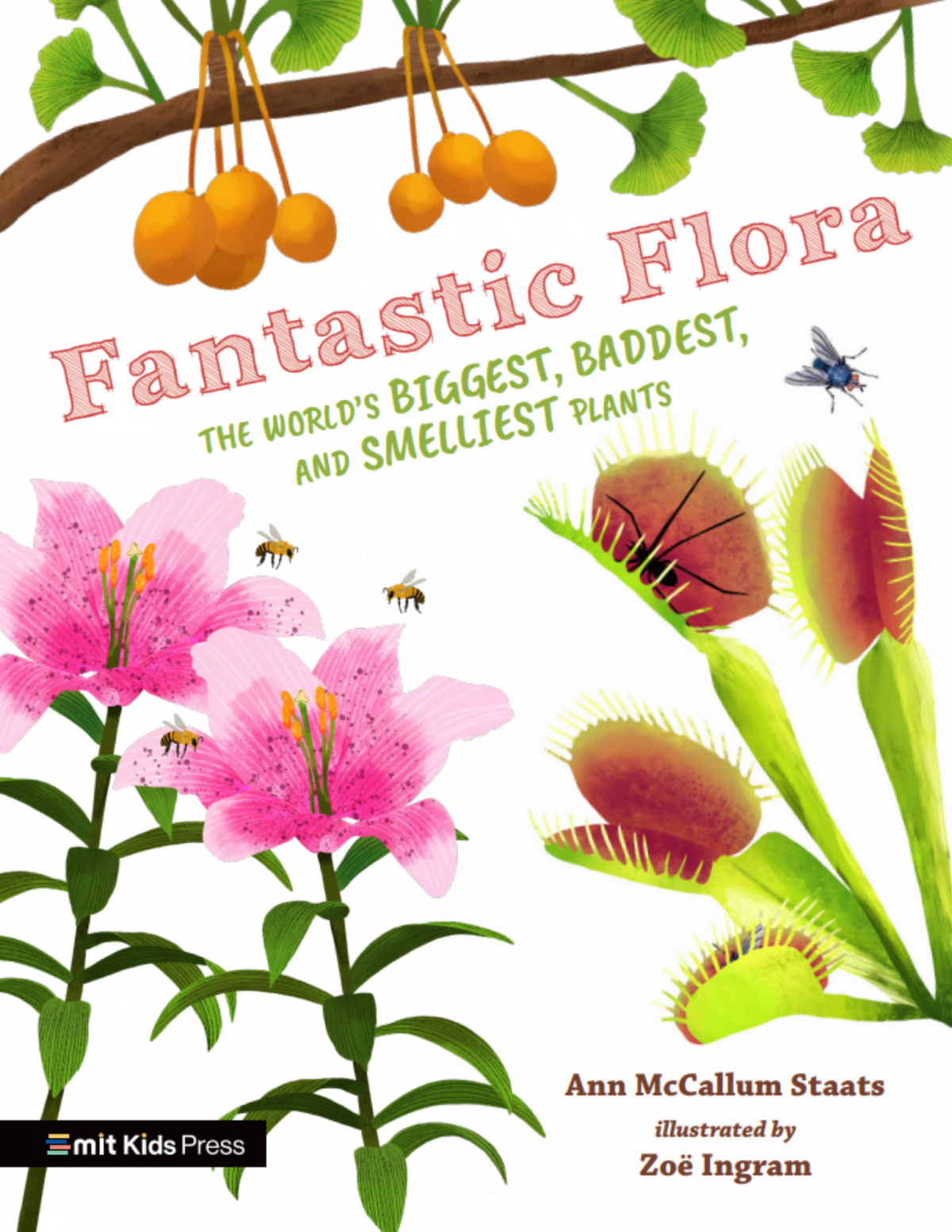My desk faces a window looking out at an undeveloped section of parkland. In the winter I can see through the motley browns and golds to a path that winds along an embankment. In the summer, greenery fills in the empty spaces obscuring my surveillance of the trail but providing a lush backdrop for my office.
I’m grateful for the view, but it used to be that I wasn’t really a plant person. Grass was what you walked on and tree branches were what you pushed out of the way when you were hiking. Sitting at my desk one day, I gave myself a challenge. Pick something ho-hum and write about it in a way that kids would find exciting. It was a nod back to my teaching roots—year after year we were given a curriculum and, no matter the topic, it was up to us to make it engaging for our students.
That day, staring out my window, I picked the topic plants, those everyday bushes, trees, and various undergrowth examples that I found pretty but knew very little about. My attitude was lackadaisical when it came to kingdom Plantae … But wait. Kids are our next Earth stewards, right? They’re the ones who will be responsible for managing the greenery. Shouldn’t they know more about what it is they’ll be tasked to take care of? Shouldn’t I? I began to ‘dig’ into some research. It didn’t take long for me to realize that plants employ remarkable strategies to survive and thrive, and that they use mind-boggling adaptations that allow them to flourish.
Here are some books about plants by like-minded authors who came to that same conclusion.
Plants Can’t Sit Still
By Rebecca E. Hirsch and Mia Posada, illustrator (Millbrook Press)
This younger picture book not only shares information about seed dispersal, but it also discusses how plants move in other ways. For example, with the Venus fly trap, leaves snap together to capture prey, or with the sunflower, the flower head realigns itself to face the sun.
Humungous Fungus
By Lynne Boddy and Wenjia Tang, illustrator (DK Children’s)
Short, accessible text covers topics such as ancient plant life and how fungi helped the evolution of the plant kingdom, along with its medical benefits, how it sometimes leads to crop disease, and plenty of fun and wacky examples.
Flowers are Calling
By Rita Gray and Kenard Pak, illustrator (Clarion Books)
This lyrical picture book shows what creatures are not pollinators and which ones are. It’s a fun and engaging journey of how flowers attract insects and birds to help them transfer pollen—and why.
What’s Inside a Flower?
By Rachel Ignotofsky (Crown Books for Young Readers)
Stylized illustrations and minimal but informative text break down facts about flowers and share the parts of a flower, pollination techniques, various creatures who interact with these plants, types of seeds and fruits, and other features.
The Secret World of Plants: Tales of More Than 100 Remarkable Flowers, Trees, and Seeds
By Ben Hoare (DK Children’s)
Even the title alludes to the mystery and wonder of plants! After an overview of the basic parts of a plant, specific plant examples go more in depth. A thorough discussion of assessable information, this book also includes fun tidbits about seed banks, algae blooms, historical references to plants, and other amazing facts.
Botanicum: Welcome to the Museum
By Kathy Willis and Katie Scott, illustrator (Candlewick/ Big Picture Press)
Organized by gallery, this book museum of plants covers a history of ancient plants, categories of plants, and how plants adapt to their environment. Like many exhibits, it includes an in-depth explanation of the topic, and then further details for each illustrated plant or plant part.
The Magic and Mystery of Trees
By Claire McElfatrick, Jen Green, and the Royal Horticultural Society (DK Children’s)
What a tree is exactly. The seasons of a tree. Adaptations and features of trees. What creatures make their home in a tree. Diverse trees around the globe. This book investigates various aspects of these pillars of the plant kingdom.
Mushroom Rain
By Laura K. Zimmermann and Jamie Green, illustrator (Sleeping Bear Press)
One of many books focusing on fungi, this one definitely stands out. With sparse, lyrical text, here is the story of mushrooms, including how their spores help to create rain, a win-win situation for the mushroom itself along with the environment.
Flower Talk: How Plants Use Color to Communicate
By Sara Levine and Masha D’yans, illustrator (Millbrook Press)
Here’s another chance to share pollination tactics, this time narrated by a cantankerous cactus. Humor makes this a fun and engaging read while learning about how color, smell, and shape help flowers entice pollinators.
Fantastic Flora: The World’s Biggest, Baddest, and Smelliest Plants
By Ann McCallum Staats and Zoë Ingram, illustrator(Candlewick/ MIT Kids Press)
Showcasing twelve stunning—and sometimes bizarre—examples, this vividly illustrated book taps into the ‘wow factor’ of plant life. From seeds that explode to the rotten meat stench of certain species, readers investigate surprising adaptations and captivating strategies for survival.
Ann McCallum Staats is a former educator and current author of numerous children’s books. Her latest is Fantastic Flora: The World’s Biggest, Baddest, and Smelliest Plants. Other books include the Eat Your Homework series, which garnered two Junior Library Guild Selections and a Bank Street College of Education’s Best Children’s Book of the Year; The Secret Life of Math; and High Flyers: 15 Inspiring Women Aviators and Astronauts. She has a master’s degree in education and lives in Virginia with her family. Visit her on social media @annmsbooks.
